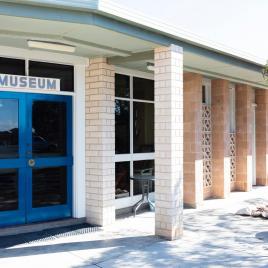Northam Heritage Centre: Northam and Districts Historical Society and Northam Army Camp Heritage Association
Northam’s old railway station remains in such good condition that it’s easy to imagine it as it was from its earliest days in 1900. The station formed part of the Eastern Goldfields Railway which, at its peak, employed some 1200 people in the Northam area. Close your eyes on the platform today and it's easy to imagine the thousands of people who would have once disembarked here - from the miners and hopefuls with dreams of riches to be made in the Goldfields, to the thousands of soldiers who journeyed through Northam ont their to World War II, and to the European migrants who flocked to migrant camps here in the aftermath of the war. Northam and Districts Historical Society interprets much of this history with artefacts and displays. It also welcomes visitors to explore a steam locomotive mr721 and several coaches on static display at the station platform. Northam and Districts Historical Society also manages Morby Cottage on the outskirts of Northam. The cottage was the home of the region’s first farmer, John Morrell, who settled here in 1836. Morrell built the cottage from stone he had quarried locally. Step inside to view artefacts from these early days and imagine life for the pioneering farmers and their families. You can also visit Northam Army Camp Heritage Association’s displays to explore Northam’s fascinating history as an army camp base. You’ll learn how Northam Army Camp was established in 1935 to serve as a military training base; how it later housed Italian prisoners of war and how, after World War II ended, it became a migrant holding camp for tens of thousands of Europeans fleeing the aftermath of the war. A series of essays, oral histories, video interviews and photographs bring this remarkable history to life.
Opening Hours
7 days 11am - 3pm





















